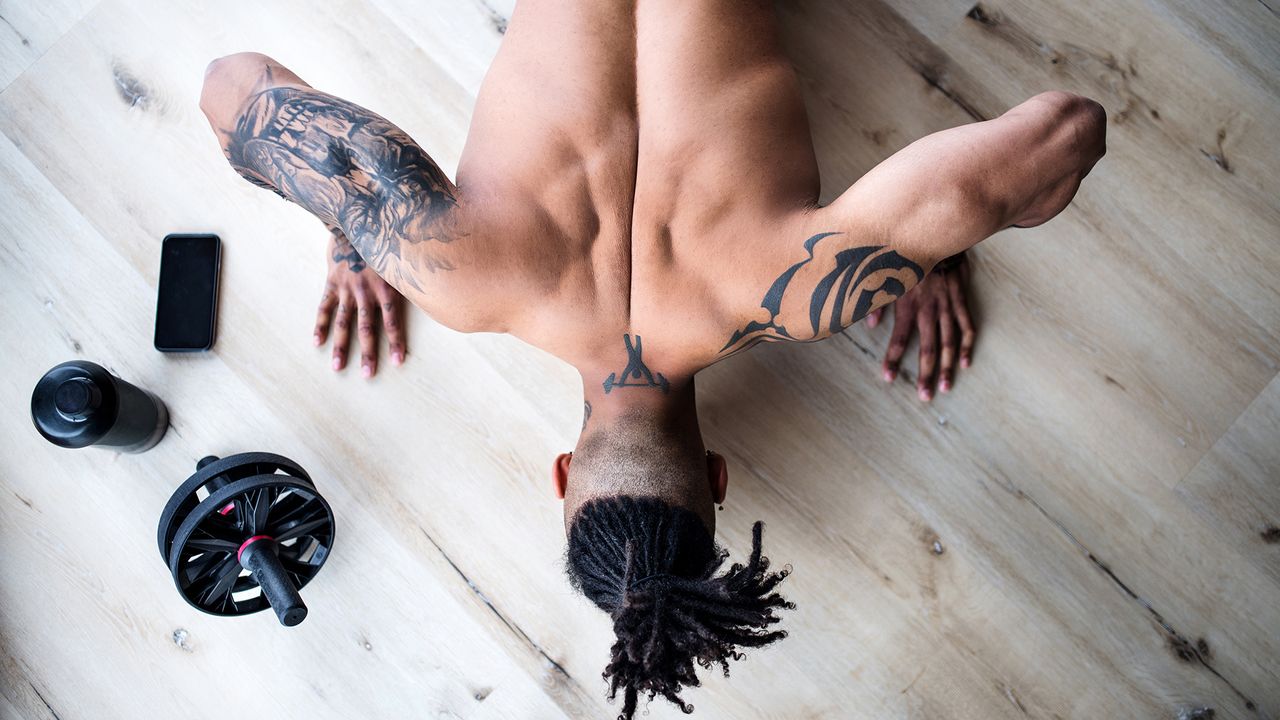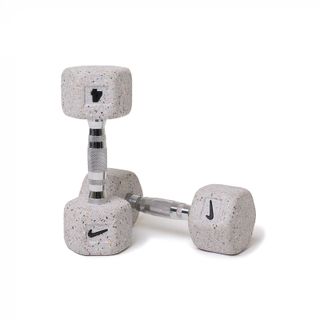

One of my New Year’s Resolutions was to get back into strength training, and as such, I’ve been doing various workouts, including VR fitness on the Meta Quest 3S and the Three Perfect Weeks of Strength programme on Apple Fitness+ (read more about it here).
The latter re-introduced me to some exercises I haven’t done for a while, including dumbbell drags, which made me realise how amazing they are for core strength. If you find planks too boring (big mistake, but I’m not here to judge) and ab rollouts too hard, dumbbell drags might just be the perfect exercise to get your abs in shape for the new year.
Sure, the move requires some core strength to start with, but thanks to its scalability, dumbbell drags are well worth including in your ab workouts, no matter how chiselled your torso is. I’ve been loving them these past few weeks, and I thought I’d share the love with you, dear reader.
Are you ready to grow a six-pack? Well, you might have to do other exercises and eat better, but dumbbell drags can certainly help achieve the coveted washboard midriff. I’m not quite there yet, but given the ache I feel in my abs and obliques, I’m most definitely on the right track. Intrigued? Let’s get going!
What are dumbbell drags?
Dumbbell drags are a core-strengthening exercise that also engages the shoulders, glutes, and various stabiliser muscles like the obliques (the muscles on the lower side of your torso). To perform the movement, you start in a high plank position with a dumbbell placed on one side of your body. While keeping your hips steady and core engaged, you reach across with the opposite hand to drag the dumbbell to the other side. Dumbbell drags challenge your balance and stability, helping to build core strength and improve overall body control.
What muscles do dumbbell drags work?
Dumbbell drags primarily target the core muscles, including the rectus abdominis, obliques, and transverse abdominis – these muscles work to stabilise the torso and prevent hip rotation during the movement. Additionally, they engage the shoulders (particularly the deltoids) and upper back to support the plank position. The glutes and hip stabilisers are also activated to maintain balance and control. Lastly, the triceps and forearms (grip strength for days!) are involved when dragging the dumbbell across the body, contributing to overall upper-body strength.

Nike Grind Dumbbells
Made with at least 20% Nike Grind rubber – a recycled material from Nike's footwear manufacturing process. – Grind dumbbells feature durable rubber with sculpted edges for comfort, a medium knurled handle for a secure grip, and a hexagonal design to prevent rolling during workouts. In short, perfect for dumbbell drags!
What equipment do you need for dumbbell drags?
To perform dumbbell drags, all you need is a single dumbbell and a flat, non-slip surface. Choose a dumbbell weight that challenges your core while allowing you to maintain proper form – starting light and progressing as you build strength. A stable surface like a gym floor, mat, or hardwood is ideal to ensure the dumbbell can slide smoothly. For added comfort and grip, especially on harder surfaces, an exercise mat can also be helpful.
Sign up to the T3 newsletter for smarter living straight to your inbox
Get all the latest news, reviews, deals and buying guides on gorgeous tech, home and active products from the T3 experts
How to do dumbbell drags
Begin in a high plank with your hands directly under your shoulders, arms straight, and legs extended behind you. Position a dumbbell beside your right hand and engage your core and glutes to maintain a straight line from head to heels.
Brace your core to stabilise your body and prevent your hips from rotating. Widen your feet slightly beyond shoulder-width for added balance and control. Reach your left hand under your body to grip the dumbbell and slowly drag it across to your left side. Place it just outside your left hand, then return your hand to the floor.
Using your right hand, drag the dumbbell back to the right side in the same controlled manner. Continue alternating sides for the desired number of reps or time.
Dumbbell drag alternatives to consider
For an easier alternative to dumbbell drags, try the Plank Shoulder Tap. Start in a high plank position and slowly tap each shoulder with the opposite hand while keeping your hips stable. This reduces the load and focuses on core stability without added weight.
For a more challenging variation, try the Renegade Row. In a high plank position with a dumbbell in each hand, row one dumbbell up toward your ribcage while keeping your hips square, then lower it back down and alternate sides. This increases the resistance and engages your upper body and core even more intensely.

Matt Kollat is a journalist and content creator who works for T3.com and its magazine counterpart as an Active Editor. His areas of expertise include wearables, drones, fitness equipment, nutrition and outdoor gear. He joined T3 in 2019. His byline appears in several publications, including Techradar and Fit&Well, and more. Matt also collaborated with other content creators (e.g. Garage Gym Reviews) and judged many awards, such as the European Specialist Sports Nutrition Alliance's ESSNawards. When he isn't working out, running or cycling, you'll find him roaming the countryside and trying out new podcasting and content creation equipment.
